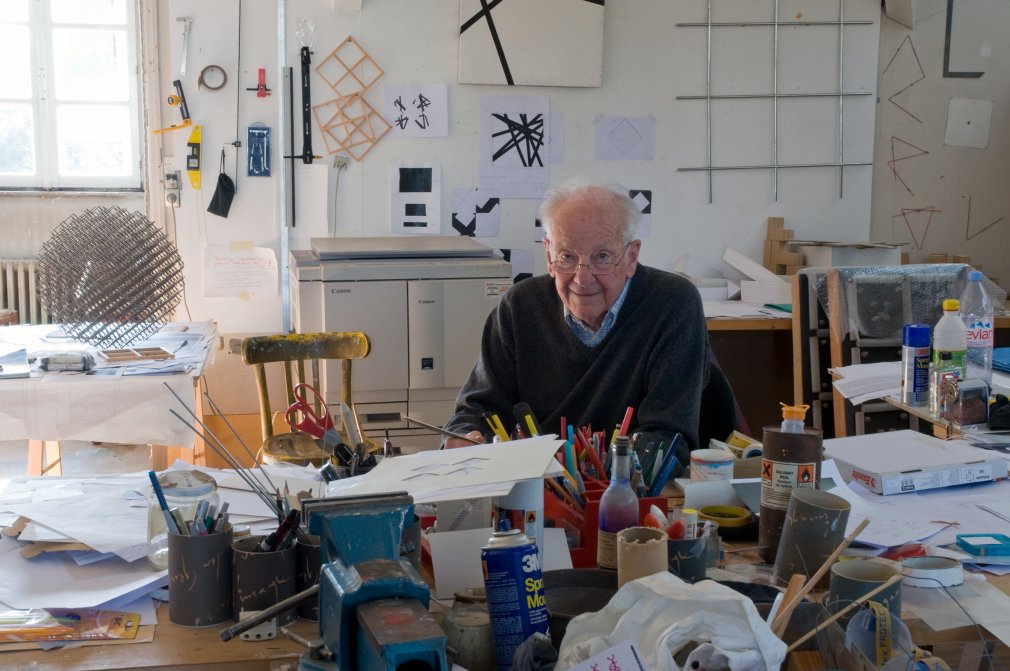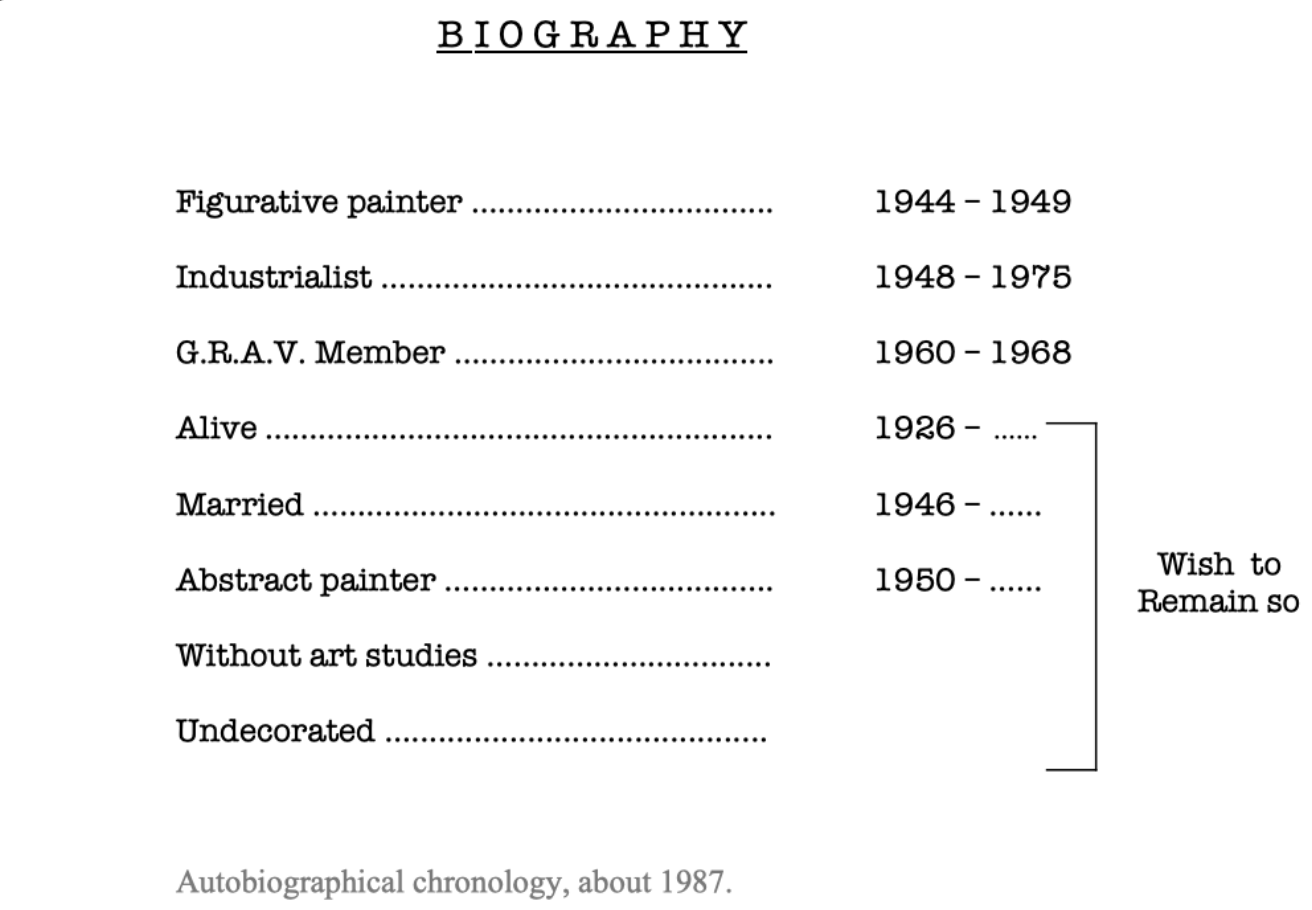Biography


François Morellet (1926 – 2016), a prolific, self-taught artist, developed a radical approach to geometric abstraction in his paintings, sculptures and installations over a career spanning more than six decades. Working primarily with basic geometric forms and using multiple materials in his works (steel, neon tubes, adhesive tape, wire mesh, wood…), Morellet committed himself to a methodology of rigorous objectivity and personal detachment. His work aims to control the creative process and to demystify the romantic mythology of art and the “inspired” artist. To accomplish this, Morellet dictated that each of his choices would need to be justified by a pre-established principle – at times even involving chance in certain components of the work. Other consistent aspects in the works are his playfulness and sense of humor, as seen in their titles, which often contain puns, parodies or portemanteau words.
Born in Cholet, France, where he lived and worked all his life, Morellet studied Russian at the Ecole des Langues Orientales in Paris before returning to run the family toy factory until 1975. This work enabled him to gain financial independence as he concurrently was familiarizing himself with the tools and production techniques that would come to influence his practice.
Concluding a brief figurative period in the 1940s, Morellet turned to abstraction following a highly influential trip to Brazil in 1950. There he discovered concrete art and the work of Max Bill. Mondrian and Theo van Doesburg also became decisive influences, as did the geometric patterns, anonymous aesthetics and precision of Islamic decorative art that he encountered during his visit to the Alhambra in Spain in 1952.
In the late 1950s, he discovered Jean Arp and Sophie Taeuber-Arp’s “Duo-collages” through his friend Ellsworth Kelly. These works prompted him to introduce chance as a central principle in his art, for example creating works based on random numbers found in his local telephone book or on the infinite series of decimals of the number pi.
Up until 1960, Morellet was establishing the various systems he used to arrange forms (superimposition, fragmentation, juxtaposition, interference), notably creating his first “trame,” a network of parallel black lines superimposed in a specific order.
In early 1960s France, Morellet was one of the six founding members of the experimental artists collective Groupe de Recherche d’Art Visuel (GRAV), which also included Francisco Sobrino, Horacio Garcia Rossi, Julio Le Parc, Yvaral and Joël Stein. He also participated in the international Nouvelle Tendance movement, which sought to collectively create and develop experimental art based on scientific knowledge of visual perception.
1970 began a period marked by the creation of increasingly stripped-down works that played with their support and the space surrounding them. He also produced a large number of architectural integrations, beginning with his first monumental intervention on the Plateau de la Reynie in Paris (1971), at the site of the present-day Centre Pompidou.
Morellet’s work has been included in a number of major international group exhibitions, including Documenta in Kassel, Germany [1964 (with GRAV), 1968 and 1977] and the Venice Biennale (1970 and 1990). In 1971, his first solo museum show was organized by the Stedelijk Van Abbemuseum in Eindhoven, Netherlands, which subsequently traveled throughout Europe. Other major retrospectives of Morellet’s work have been organized at the Nationalgalerie in Berlin (1977), the Centre Pompidou (1986 and 2011) and the Galerie nationale du Jeu de Paume (2000) in Paris. He was also the subject of a North American retrospective in 1984-85, which traveled to Buffalo’s Albright-Knox Art Gallery, Montreal’s Musée d’art contemporain, the Brooklyn Museum and Miami’s Center for the Fine Arts. In 2010, Morellet became the second artist to have a work inaugurated during his lifetime at the Musée du Louvre, the permanent in situ installation L’esprit d’escalier.
His work is represented in major public collections, including the Centre Pompidou, Dia Art Foundation (New York), Los Angeles County Museum of Art, Museum of Modern Art (New York), Seoul Museum of Art, Tate Britain, Tel Aviv Museum, Kunsthaus Zurich and Nationalgalerie Berlin.


